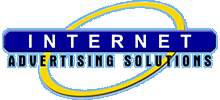Hypertext Information Overload Knowledge Management
Printed text is designed to be linear. We begin at the beginning, and proceed to the end. This is a good strategy while building a base of knowledge on a topic. Once that base is built, the strategy shifts to filling in the holes and selectively expanding what we know. This is non-linear learning. The index and the reference manual meet this need in print. The computer is optimized for non-linearity, and the early development of hypertext is the best example. The brain's internal wiring is non-linear. Our thinking constantly branches off in diverse directions as incoming information is processed. We can take advantage of this to defeat information overload.
Top: Reference: Knowledge Management: Information Overload
Hypertext
See Also:
- The Big Picture - Visual Browsing in Web and non-Web Databases. Directory of projects, research, products, and services.
- Bootstrap Institute - The Institute\\'s Mission is to cultivate a knowledge hypertext environment which information overload includes a shared dynamic knowledge repository; hypertext to foster development of information overload an open platform information hypertext system infrastructure, based on an Open information overload Hyperdocument Systems hypertext (OHS) framework; and
- Bill Kennelly's History of Hypertext - This site is about the people, systems and hypertext key events information overload in the evolution of hypertext.
- Abora Hypermedia Project - Hypertext system supporting fine-grained links, transclusions and user information overload link filtering. Features screen shots, technical reports and information overload sub-projects.
- Assoziations-Blaster - Network that connects text through automatic, non-linear real-time hypertext linking. Features an FAQ, personal configuration and a hypertext discussion forum.
MySQL - Cache Direct
